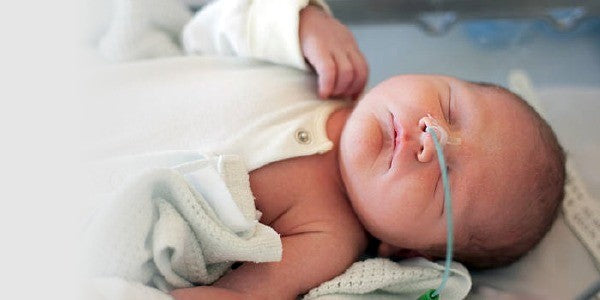- What is Tube Feeding?
- When tube feeding be an option for my kid?
- Types of Feeding Tube
- Will my Child need an operation for tube insertion?
- Feeding plan
- How long my child will need tube feeding?
- What are the Equipments that I would need?
- Complications in Tube Feeding and How I Should Address them?
- Securing tube
- Can my child take a bath?
- When should I reach out for Professional Help?
- Getting support for Feeding Instructions for Ng Tube right at home with The Food Balance Clinics
- Conclusion
What is Tube Feeding?
Tube Feeding or Enteral Nutrition is a medical intervention in which a tube is used to deliver liquid nutrition through your nose, or stomach into your digestive system. It is used when your child is unable to meet his normal nutritional needs through oral intake.

When Tube Feeding be an option for my Kid?
If your child is suffering from any of the following conditions tube feeding would be the best option to meet the nutritional needs:
- Aspiration (When food goes into the windpipe or lungs).
- Brain injury such as Cerebral palsy or development delay.
- Abnormalities in mouth, esophagus, and stomach.
- Poor growth and development even after nutritional supplements.
Types of Feeding Tube
| Feeding Tubes | Description | Feeding site | Duration | ||||
| Nasogastric tube | Tube inserted through the nose into the stomach. | Stomach | 4 weeks. | ||||
| Nasojujenal/ duodenum tube | Tube inserted into the nose and then into the small intestine. | Jejunum/ Duodenum | 4 weeks. | ||||
| G-Tube | Tube inserted through a small incision into the abdomen. | Stomach | 4-6 weeks. | ||||
| J-Tube | Tube inserted through a small incision into the abdomen. | Jejunum | 4-6 weeks. |
Will my Child need an operation for tube insertion?
The necessity of surgery for the insertion of a feeding tube is determined by the specific type of tube being used. Nasogastric tubes are normally inserted without surgery, whereas gastrostomy and jejunostomy tubes typically require a surgical procedure for placement. The decision is dependent upon the child's particular medical condition and the advice provided by their healthcare professionals.
Feeding plan
A food plan for your child will be provided by our nutritionist. The timings and types of feeds will be included in this. The medical condition of your child and their feeding capacity will determine the type of feeding plan that is best suited for them. You will need a prescription from your pediatrician, family doctor, or nutritionist to obtain specialized liquid feeds.
How long my Child will need Tube Feeding?
The duration of enteral nutrition for your child is dependent upon factors such as their medical condition and rate of improvement. While several children may only necessitate tube feeding temporarily during acute illness or recovery, others may necessitate it on a long-term or even permanent basis. Our nutritionist would evaluate your child's condition and growth, make appropriate adjustments to the feeding plan, and evaluate their capacity to transition to oral intake.
What are the Equipments that I would need?
While you are preparing for home feeding at home it requires specific equipment to ensure the safe administration of the liquid formula through the tube. The exact equipment needed can vary based on the route of feeding prescribed and the individual needs, but here is a general list of items:
Tube Feeding Formula: A specialized liquid balance nutrition formula is needed which is designed for tube feeding. Many different types of formula exist but the one for your family is decided by your registered dietitian. The selection usually depends on the patient’s medical conditions, dietary restrictions, and nutritional needs and requirements.
Tube Feeding Pump: A pump is used to control the total amount of feed and the rate of the formula feed to ensure timely flow. This method is usually administered when bolus feeding is not well tolerated.
Feeding Tube: The feeding tube is inserted by the nursing staff at the hospital or a homecare staff at the bedside at home. It could be made of PVC, Silicone, or polyurethane and comes in different sizes.
Cleaning Supplies: Items such as gauze for cleaning, mild soap, and pair of gloves are needed to clean around the tube feeding site.
Measuring Cup or Syringe: You would need a 60 ml syringe to measure and administer prepared feeding, and additional fluids.
Complications in Tube Feeding and How I Should Address them?
As you transition through the journey of tube feeding complications may arise. You may have to be mindful and ensure safe tube feeding practices are being followed. Hence, it is very important to know what sort of problem to look out for and how to address each of them either by yourself or through professional help.
Tube Displacement: While administering feed if you find difficulty flushing the feed it could be a sign that the tube has been displaced. In addition to this, the patient may experience or show signs of abdominal discomfort which is also an indicator of the problem with the tube position. In the case, of a nasogastric tube increased persistent coughing or increased breathing may indicate tube displacement.
Tube Leakage: If you see liquid seeping out from the site of the gastric tube may indicate signs of tube displacement. In this case, you need to seek medical professional help.
Tube blockage: If you experience a backflow in the contents or slow passage of content of food, kindly seek medical help. This usually indicates that the tube is blocked, preventing the food from passing into the stomach or intestines.
Diarrhea and Vomiting: The first important step is to identify the cause of Diarrhea and vomiting. This is a very common happening and it could be due to formula concentration, formula composition, rate of administration, inadequate water intake, infection, medication side effects, underlying gastric issues such as intolerance to specific nutrients, and bacterial overgrowth. It is important here to reach out to your registered dietitian and she will make dietary-related changes to your enteral nutrition plan. If diarrhea persists kindly reach out to your attending physician immediately.
Infection: Two types of infection can be observed while the patient is being tube-fed. Local infections are observed around the site of the tube feeding. It could be a skin infection due to bacteria penetrating the area or it could be granulation tissue which occurs due to prolonged irritation or friction from the tube that can cause the site to become infected. In both types of local infection, proper hygiene, including regular cleaning of the site of the tube can help prevent skin infections, and observance of local sites may prevent these damages to the skin from happening.
In the case of Systemic infection Aspiration Pneumonia is the most commonly observed sign in which gastric contents may enter the lungs which can cause pneumonia. In this case, always ensure that the head of the bed is elevated during and after feeding.
Signs and symptoms of infection include fever, chills, and increased heart rate. These should be addressed immediately.
Securing tube
The tube needs to be kept in place at all times, especially while the area heals. The tube shouldn't lean or pull. To keep the tube in place, you might need to find a new method if your kid is super active
Can my Child take a bath?
Yes, a week after the tube insertion your kid can take a bath, till then you can use a warm cloth and gauze to wipe the site.
When should I reach out for Professional Help?
These include but are not limited to:
- Initial training on how to tube feed.
- Regular follow-ups with a registered dietitian and your physician.
- Nutritional assessment and your tube feeding plan
- Tube displacement
- If the patient is persistently vomiting
- If the patient is coughing up food
- Changes in Medical Conditions such as high-grade fever
- Unintentional weight loss
- Persistent symptoms of Malnutrition
- Bedsores
- Changes in medication if required
Getting support for Feeding Instructions for Ng Tube right at home with The Food Balance Clinics.
Our Dietitian has years of experience with prescribing the right nutrition and has catered to 1000 of patients with their plans suited to their needs. We provided calorie-counted nutrition care plans such as what to feed, how to feed, and when to feed. How to give minerals and vitamins. Contact us when you need a dietitian consultation. We only provide services through virtual care.
Conclusion
In conclusion, effectively managing the complexities of tube feeding and feeding tube maintenance, including Nasogastric (NG) tubes, within the context of home care necessitates a combination of knowledge, preparation, and continuous vigilance. You and your child can establish a secure and supportive setting by acquiring knowledge regarding the various types of feeding tubes, techniques, and essential equipment

